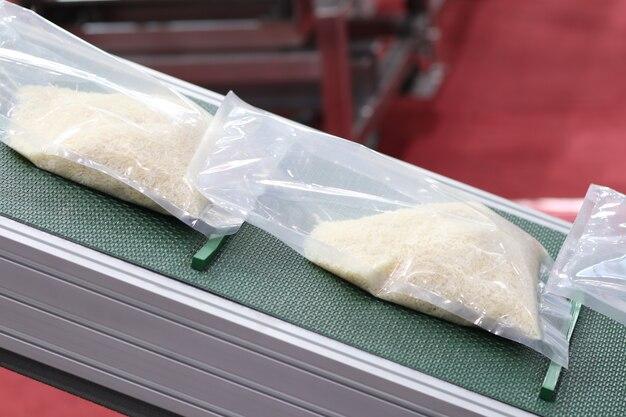Are you looking for an easy and affordable way to soothe sore muscles or relieve aches and pains? Look no further than a homemade rice heat pack! This simple and effective DIY project can provide comforting warmth and relaxation whenever you need it. In this comprehensive guide, we’ll answer all your burning questions about rice heat packs, from the best type of rice to use to how long they stay warm.
But first, you might be wondering: why rice? Rice is a fantastic filling for heat packs because it retains heat for an extended period of time. Whether you prefer the fragrant aroma of jasmine rice or the simplicity of white rice, both options can be used to create a soothing heat pack. And the best part? Rice heat packs can be easily heated in the microwave, making them a convenient option for quick pain relief on those chilly days.
So, if you’re ready to learn how to make your very own rice heat pack, grab your favorite fabric and let’s get started!
How to Make a Rice Heat Pack
So, you’ve had a long, tiring day and all you want is some soothing heat to relax your muscles. Fear not, because today I’m going to teach you a DIY trick that will blow your mind: making your very own rice heat pack. Not only will you save some bucks, but you’ll also have a cozy companion for those chilly evenings. Let’s dive right in!
Gather Your Supplies
Before we get our hands dirty, let’s make sure we have everything we need. Don’t worry; you don’t need to raid a science lab or hunt down rare ingredients. Here’s what you’ll need:
1. Fabric
First things first, pick out a fabric that speaks to your soul. It could be something colorful, soft, or even patterned with unicorns (no judgments here). Just make sure it’s cotton fabric, so it’s microwave-safe and won’t set your house on fire.
2. Sewing Kit
Now, grab a needle, thread, and some pins. If you’re feeling spontaneous, you can even use a sewing machine. But let’s keep it simple, shall we?
3. Rice (Duh!)
Ah, the star of the show: rice! Dig out that bag of rice sitting in your kitchen cupboard and give it a purpose in life beyond becoming a part of your dinner.
4. Your Favorite Essential Oil
To take your heat pack to the next level, we’re going to add a few drops of your favorite essential oil. Lavender for a calm evening, eucalyptus for a refreshing vibe, or maybe even peppermint for that extra zing.
Let’s Get Crafty!
1. Measure and Cut
Take your fabric and measure out two rectangles, roughly 10 inches by 5 inches. Remember, they don’t have to be perfect; we’re not competing in a sewing Olympics here.
2. Sew It Up
Place the two fabric rectangles on top of each other, with the colorful, pretty sides facing inwards. Now, start sewing around the edges, leaving a small opening (around 2 inches) for filling the pack.
3. Rice and Oil Party
Time to unleash the rice! Grab a bowl and mix together 2 cups of rice with around 10 drops of your chosen essential oil. Go wild with the scent; it’s what will make your heat pack your personal happy place.
4. Fill It Up
Using a spoon, carefully fill your fabric pocket with the rice and essential oil blend. Don’t overstuff it; we want it to be pliable, not bursting at the seams like an overeager partygoer.
5. Sew It Shut
Once your pack is sufficiently filled, it’s time to sew up that little opening we left earlier. Double-check for any rice escapees and make sure it’s sealed tight.
Embrace the Warmth!
Congratulations, you clever creator of cozy comfort! Now that your rice heat pack is complete, it’s time to put it to good use. Simply pop it in the microwave for 1-2 minutes (microwave times may vary, so be cautious), and rejoice as warmth envelops your tired muscles. Place it on your neck, back, or wherever your body craves some tender heat. Ah, bliss!
Remember, you can always reheat it whenever you need a little pick-me-up. So sit back, relax, and revel in the awesomeness of your DIY rice heat pack. You deserve it!
Pro Tip: Don’t Forget to Play It Safe!
While our rice heat packs are fantastic, please exercise caution. Before using it, check for any signs of damage or overheating. Microwave in short intervals, just to be on the safe side. Safety first, folks!
Now go forth and enjoy your newfound DIY creation. Your muscles will thank you, and so will your wallet. Stay toasty, my friends!
FAQ: How To Make A Rice Heat Pack
Is there microwaveable rice
Yes, microwaveable rice is widely available in stores. It comes pre-packaged in microwave-safe bags that are convenient and easy to use. Using microwaveable rice for your heat pack ensures safety and efficiency.
Can you use jasmine rice for a heating pad
Absolutely! Jasmine rice works just as well as other types of rice when it comes to making a heating pad. Its fragrant aroma adds a pleasant touch to your heat pack experience.
How long does a rice bag last
With proper care, a rice bag can last for a long time. Typically, it can endure multiple uses over several months, providing soothing warmth whenever you need it. Regularly inspect your rice bag for any signs of wear and tear to ensure its longevity.
How long do microwave heat pads stay warm
Microwave heat pads usually stay warm for around 30 minutes to an hour, depending on the size and insulation of the pad. This duration allows for ample relaxation and relief from muscle tension or aches. Reheating the pad is as simple as popping it back in the microwave for a quick warm-up.
How do you make a fabric rice bag
Creating a fabric rice bag is a straightforward process. Start by choosing a soft, durable fabric of your preference. Cut it into a rectangular shape, typically around 10×10 inches. Sew three sides, leaving one side open for filling. Fill the bag with rice, leaving some space for movement. Finally, sew the remaining side to secure the rice inside. Voilà, your fabric rice bag is ready for use!
How long do heat packs stay warm
Heat packs, including rice heat packs, generally provide warmth for approximately 30 minutes to an hour. This duration ensures optimal comfort and relaxation. Should you desire prolonged warmth, simply reheat the pack for another round of cozy goodness.
What are heat pads filled with
Heat pads are typically filled with natural materials such as rice, flaxseed, or corn. These fillings possess excellent heat-retention properties, allowing them to maintain warmth and provide soothing relief when heated.
How do you make a rice heating pad
To make a rice heating pad, begin by selecting a fabric of your choice and cutting it into two identical rectangular pieces. Sew three sides of the fabric, leaving one side open for filling. Fill the pad with rice, ensuring it is not too tightly packed. Finally, sew the remaining side to seal the rice inside. Your custom rice heating pad is now ready to be warmed up and enjoyed!
How much fabric do I need for a rice bag
Generally, a piece of fabric measuring 10×10 inches is sufficient for making a rice bag. However, feel free to adjust the dimensions based on your personal preference, keeping in mind that the fabric should be large enough to comfortably hold the desired amount of rice.
How do you make a rice compress
Making a rice compress is similar to creating a rice heating pad. Cut a piece of fabric to your desired size, leaving one side open. Fill the fabric with rice, ensuring it’s not overly compact. Sew the open side to secure the rice in place. When heated, your rice compress will provide targeted warmth and relaxation to specific areas of the body.
What kind of corn do you use for heating pads
For heating pads, it’s best to use whole kernel corn. This type of corn retains heat well and provides a comfortable warmth when heated. Whole kernel corn can be easily found online or in stores, ensuring you have the perfect filling for your soothing heat pack.
What is the best filling for heat packs
There are various fillings to choose from when it comes to heat packs. Rice, flaxseed, and corn are popular options due to their optimal heat retention and soothing qualities. You can experiment with different fillings to find the one that suits your preferences best.
How long do rice bags stay warm
Rice bags typically stay warm for approximately 30 minutes to an hour, offering a delightful window of warmth and relaxation. During this time, you can snuggle up and allow the soothing heat to ease any tension or discomfort.
Can you use white rice for a heating pad
Absolutely! White rice is a commonly used filling for heating pads. Its availability and affordability make it a popular choice. Whether you prefer the aroma of jasmine rice or the simplicity of white rice, both types can efficiently provide the warmth and comfort you seek.
How many times can you heat a rice bag
Rice bags can be heated multiple times, providing ongoing comfort and relaxation. With each use, the rice inside the bag absorbs heat and gradually releases it, offering soothing warmth for your weary muscles or simply providing a cozy companion during chilly evenings.
What kind of beans do you put in a heating pad
While rice and corn are popular choices for heating pads, certain types of beans can also be used. Small beans like black beans or lentils can work well as fillings, effectively retaining heat and delivering the cozy warmth you desire.
Can I use rice for a heat pack
Certainly! Rice is an excellent choice for a heat pack filling. Its heat-retention properties allow for a pleasant and soothing warmth that provides relief and relaxation when needed. Use rice to create your DIY heat pack and experience the comforting benefits firsthand.
How long does a rice sock stay warm
On average, a rice sock will stay warm for around 30 minutes to an hour. This duration is perfect for applying soothing warmth to targeted areas of the body. If you need to extend the heat time, simply reheat the rice sock by warming it in the microwave.
What kind of rice do you use for a heating pad
You can use various types of rice for a heating pad, depending on your preference. Jasmine rice, white rice, or even brown rice work well and provide the desired warmth and comfort. Choose the type of rice that appeals to your senses and enjoy the soothing benefits it offers.
How long do rice packs last
Rice packs are durable and can last for several months, even with regular use. Their longevity depends on the quality of the fabric used, as well as how well they are cared for. Ensure that your rice pack is well-sewn and inspect it occasionally for any signs of wear and tear to guarantee lasting use.
What material is used for rice bags
Rice bags are commonly made from soft and durable fabric materials such as cotton or flannel. These fabrics provide a cozy feel against the skin while securely holding the rice filling. Choose a fabric that suits your preferences and enjoy the comforting embrace of your custom-made rice bag.

